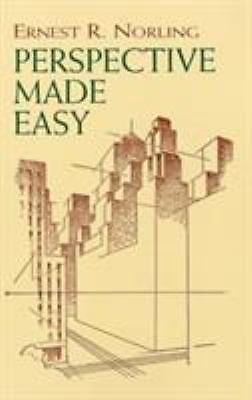Foto 1 di 1

Foto di catalogo

Foto 1 di 1

Foto di catalogo

Perspective Made Easy by Ernest R. Norling (1999, Trade Paperback)

AlibrisBooks (460908)
98,6% di feedback positivi
Prezzo:
US $12,70
CircaEUR 10,82
+ $19,87 di spese di spedizione
Restituzioni:
Restituzioni entro 30 giorni. Le spese di spedizione del reso sono a carico dell'acquirente..
Condizione:
New Trade paperback
Oops! Looks like we're having trouble connecting to our server.
Refresh your browser window to try again.
Informazioni su questo prodotto
Product Identifiers
PublisherDover Publications, Incorporated
ISBN-100486404730
ISBN-139780486404738
eBay Product ID (ePID)1017498
Product Key Features
Book TitlePerspective Made Easy
Number of Pages224 Pages
LanguageEnglish
Publication Year1999
TopicTechniques / Drawing, General
IllustratorYes
GenreDesign, Art
AuthorErnest R. Norling
Book SeriesDover Art Instruction Ser.
FormatTrade Paperback
Dimensions
Item Height0.6 in
Item Weight8.8 Oz
Item Length8.5 in
Item Width5.7 in
Additional Product Features
Intended AudienceTrade
LCCN99-010310
Dewey Decimal861
Table Of ContentFOREWORD STEP ONE The Horizon The Vanishing Point The Eye-Level STEP TWO The Eye-Level and Its Relationship to Perspective Drawing STEP THREE Parallel lines as We Seem Them Parallel Lines Related to One-Point Perspective STEP FOUR The Three Sets of Parallels Locating the Point and the Eye-Level STEP FIVE The Two Vanishing Points "The "Height" Lines" STEP SIX Placing the Two Vanishing Points The Error of Close Spacing STEP SEVEN Showing How the Vanishing Points Move in Relationship to One Another STEP EIGHT Building Perspective with Bricks STEP NINE Placing Figures and Objects in a Drawing STEP TEN Center of Interest Changing the View Roofs in Perspective STEP ELEVEN Interiors Placing of Furniture STEP TWELVE Finding the Center Dividing Spaces into Halves Practical Applications STEP THIRTEEN Cylinders in Perspective Drawing Ellipses STEP FOURTEEN Practical Uses of Cylinders in Drawing Dividing the Circle STEP FIFTEEN Dividing a Surface in Perspective Drawing a Checkerboard STEP SIXTEEN Shade and Shadow STEP SEVENTEEN Reflections STEP EIGHTEEN Unusual Perspective Up-and-Down Points Examples STEP NINETEEN Perspective Downhill Perspective Uphill The False Eye-Level STEP TWENTY Mechanical Perspective
SynopsisPerspective is easy; yet, surprisingly few artists know the simple rules that make it so. Remedy that situation with this simple, step-by-step book, the first devoted entirely to the topic. 256 illustrations., Perspective is easy; yet, surprisingly few artists know the simple rules that make it so. Now they can remedy that situation with this step-by-step book, the first devoted entirely to clarifying the laws of perspective. Using over 250 simple line drawings, the author leads the reader through every important concept. 256 illustrations., Perspective, the author tells us, is easy; yet surprisingly few artists are aware of the simple rules that make it so. This easy-to-follow book -- the first devoted entirely to clarifying the laws of perspective -- remedies the situation. In it, the author uses over 250 simple line drawings to illustrate the concepts involved. Beginning with clear, concise, immediately applicable discussions of the horizon, vanishing point, and the crucial relationship of eye level to perspective drawing, you'll learn how to place figures and objects in a drawing, depict interiors, create shade and shadows, and achieve all the other elements necessary for a successful perspective drawing. By repeatedly stressing important points, Mr. Norling teaches you to make them second-nature. Moreover, his approach is so simple and direct that no matter how little raw talent or experience you have, you will soon be able to apply these techniques almost instinctively. Mastery of perspective is a basic skill every artist must have. This simple, nontechnical guide will enable you to master its essentials in a relatively short time. Clear and concise, this book is an essential addition to any artist's bookshelf.
LC Classification NumberNC750.N717 1999
Tutte le inserzioni per questo prodotto
Scrivi una recensione per primo












![Perspective Made Easy [Dover Art Instruction] - Ernest R. Norling - paperback](https://i.ebayimg.com/images/g/~h0AAeSwkVFoULzL/s-l225.jpg)







